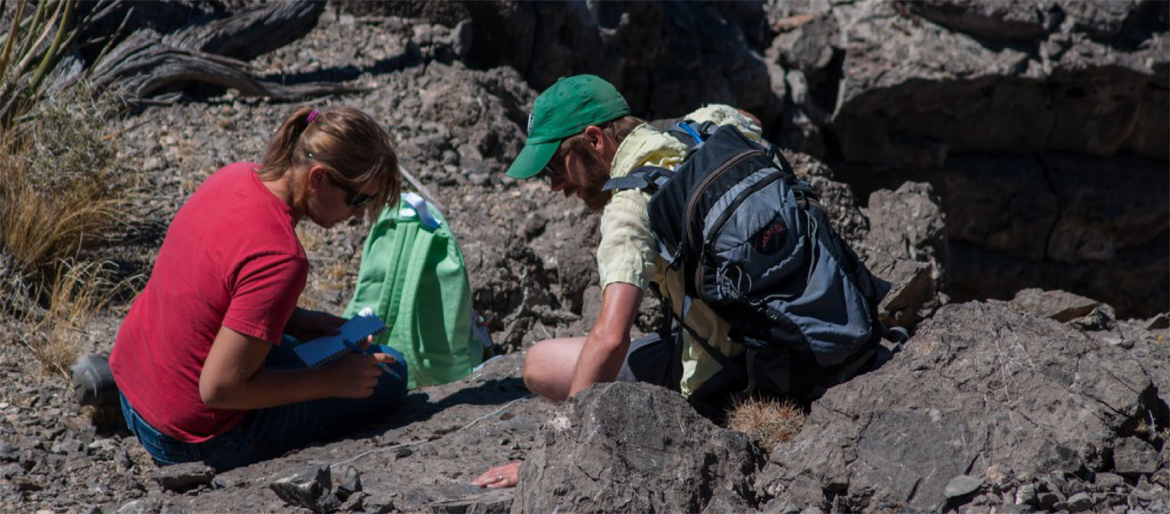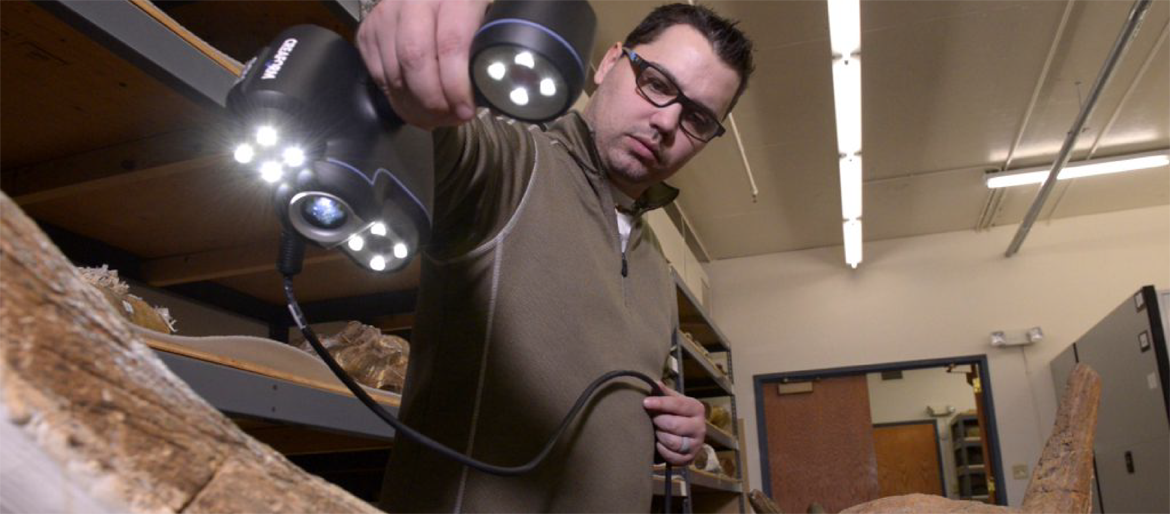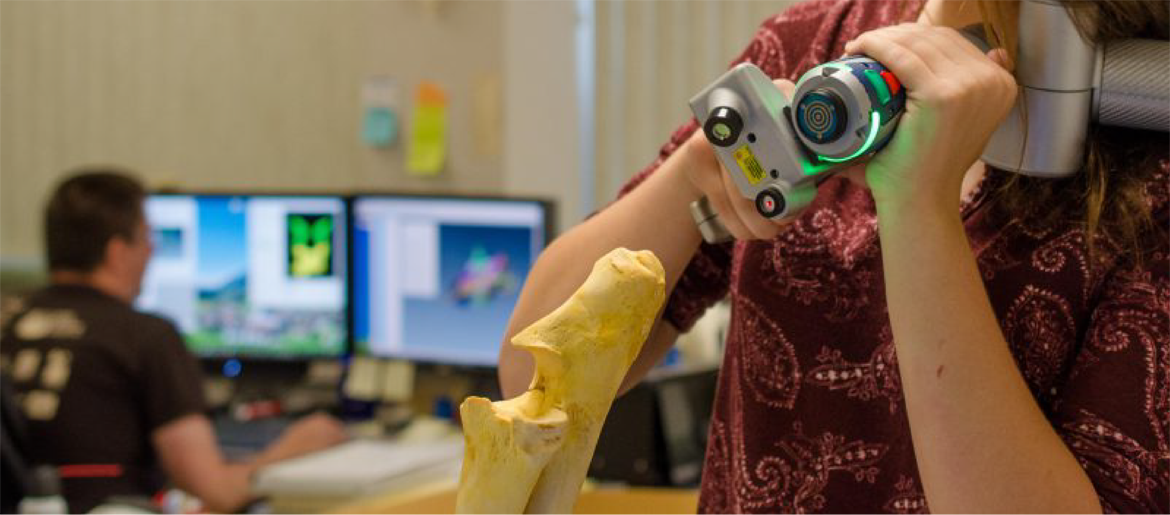Collection Information
Why We Have Collections
The Idaho Museum of Natural History cares for over 500,000 specimens in our collections. The specimens we collect and conserve document the natural history of Idaho and the Intermountain West. The collections are divided into three divisions: Anthropology, Earth Sciences, and Life Sciences. Taken together they form a vast (and growing) permanent record, which scientists can examine again and again, applying new analytical techniques and testing new hypotheses.
Who uses our collections?
Valuable information from collections benefits not only scientists studying the evolutionary relationships of organisms or the biology and geology of the planet, but they form the basic materials that preserve our heritage in Idaho and provide context for humans on this planet. Our collections are used by students at ISU to enhance their educational experience through class work and research. ISU professors and outside researches also use the collections to enhance and increase their research. These collections form the materials for public display in our exhibit gallery.
Guidelines for visiting researchers
Thank you for your interest in our collections! We appreciate the opportunity to share our collections with a wider audience. These guidelines are designed to help make your research experience a bit easier. Please feel free to ask any staff member if you have further questions!
The Collection Manager will provide you with a tour of the collections areas you will be working in and show you where the specimens you need are located. (Remind them to point out the location of the nearest restrooms!). Please let the Collections Manager know what you need in terms of materials such as a workspace, copy stand, microscope, etc.
Hours:
The collections spaces are open 9 a.m. to 4 p.m. Monday through Friday. If you need to work outside of these hours, please let the collections manager know early on so that arrangements can be made. Please do not expect to stay late or come in on weekends unless you have made prior arrangements with the collection manager.
Specimen Care and Handling:
Gloves are not necessary for some of the specimens. The collection manager will let you know of any specific handling concerns. Please move the specimens as little as possible to reduce the risk of damage. Ask for help when moving heavy, awkward, or fragile specimens.
Food and Drink:
Food is not allowed in any of the collections areas. Check with the collection manager about drinks such as coffee.
Photography:
We allow photography on all of the earth sciences collections. You can request existing photographs from the collection manager. If you are going to use a photograph of a IMNH specimen (even if you took it) in a publication, you must fill out the IMNH Use and Reproduction Form to obtain approval and proper citation.
Loans:
- All loans must be approved by a curator.
- Type specimens are not loaned out except in unusual circumstances.
- Specimens from active research collections will not be loaned except in unusual circumstances.
- If you are a student, the loan must be to your advisor.
- The maximum term for a loan is one year, with possible renewal.
IMNH rules for facilities and collections use
- All users must obtain permission before examining any collection or using laboratory areas so Museum staff can coordinate visitors, track use of the collections, and comply with environmental health and safety requirements.
- All users must specify the collection they want to use; permission for access to one collection does not authorize use of others.
- All users must obtain permission from a Museum Curator before removing any specimen(s) from IMNH collections.
- If you are an ISU faculty member, graduate student, or undergraduate student, please read our collections policies for ISU researchers for specific information on the use of IMNH collection materials.
- If you are a researcher from an institution other than ISU, please read our collections policies for non-ISU researchers for specific information on the use of IMNH collection materials.
Services we provide
- Background research including literature, museum database, and other record searches
- Curation and Storage
- Field investigations in Anthropology, Earth Sciences, and Life Sciences
- Archaeological and paleontological survey/testing/excavation
- Identification, preparation, and curation of natural history specimens
- Comprehensive archaeological and paleontological resource assessments, sensitivity surveys, and other types of evaluations
- Archaeological and paleontological resource mitigation and monitoring
- Archaeological and paleontological repository for state and federal material.
IMNH Collection Divisions
The Earth Sciences Division collects and studies the natural history of Earth’s rock, mineral, and fossil record, and protects them for future generations.
Our collections focus on the natural history of Idaho, but include significant holdings from the Great Basin and Colorado Plateau regions of the Intermountain West.
The life sciences comprise all fields of science that involve the scientific study of living organisms, like plants, animals, and human beings. Included in the life sciences is biology, a natural science concerned with the study of life and living organisms, including their structure, function, growth, origin, evolution, distribution, and taxonomy.
The museums biological collections represent one of the most complete collections of material from Idaho. The herbarium houses over 70,000 pressed plants as well as bryophytes, fungi, and lichens. Individual zoological collections consist of mammals (ca. 1200 specimens), birds (ca. 1800 specimens), amphibians and reptiles (ca. 2500) and fish (ca. 1000)
Anthropology is the study of human cultural diversity, archaeology, language, and human biology and evolution. The collections at the IMNH are focused on Idaho, but span the globe in their importance. Studies ranging from the ecology of people in Ice Age Idaho to modern bead-working traditions emphasize the diverse research and educational opportunities for anthropological studies at the IMNH.
The Earl H. Swanson Archaeological Repository (ESAR) is one of three archaeological repositories operating under the Archaeological Survey of Idaho (ASI), whose core mission is to ensure that archaeological materials recovered within the State of Idaho are curated and remain within the state for the benefit of public and scientific interests, and to guarantee their continued accessibility for study and other educational purposes. All collections are available to the public for such purposes, in accordance with the IMNH Collections Management Policy, the ESAR Curation Policies and Procedures, and all applicable laws and regulations regarding the maintenance and use of federally and state-owned or administered collections
IMNH’s archives contains: film & audio recordings, photographic media, accession & exhibit records, & copies of our in-house publications. These records are specific to IMNH as an entity, and are the responsibility of the Registrar. They include original accession documentation for all collections, legal, copyright, and other records about the Museum’s past. Documentation related to individual specimens and collections such as field records, site or locality information, specimen catalogs, object photographs, site maps, etc. are maintained by the individual Collection Divisions.
Access the collections
To access our collections, please fill out Form 110 Request for Collections Use and email to imnh@isu.edu.
Once the form has been received, it will be reviewed by the appropriate collection manager and research curator.



